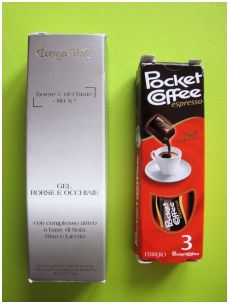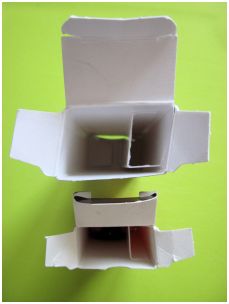The price of nothing
What a box of chocolates with coffee and an anti-wrinkle gel have in common? Two different brands, two completely different products, purchased in two different shops. Nothing, you might say. Yet they have something in common and you have just to open the two boxes to immediately realize it: in both packages there is a small cardboard bulkhead which serves to divide the product by… nothing. That’s right, nothing. In fact the only purpose of the bulkhead is to avoid that the product may move inside the package since the box is greater by about 50% of what it would actually need.
Why is that? Well, if anyone tells you that it is necessary to protect the product from any jamming or keep it better, he is lying. The only reason why there is the bulkhead is simply to put on the shelves a larger size package, that is, to give the impression that you are buying more product than it is actually present in the box. Is that a fraud? No, at least from a legal point of view, given that the actual amount of product is still written on the package. However, let us be honest: are you able to estimate how much is 15 milliliters of gel or 37.5 grams of chocolate?


When we buy something the first evaluation is always done by eye and anyway, even if we had to read the volume or weight actually printed onto the package, we would have problems to evaluate it, especially if it is a product composed of several ingredients.
Now I propose you to do one thing: go to the kitchen or bathroom, wherever you have various products still in their original packaging and try to see how much product there is in fact with respect to the package. Also check the level of liquid in the bottles you just purchased, especially perfume, deodorant, and soap. Obviously I do not speak of the space required for any protective packaging, but the empty part of the box, can, bottle, or jar. Aside from rare cases in which the empty space has a justification, as in the case of certain products that emit gas, you will find that especially in many consumable goods, such as snacks, breakfast cereals, many cosmetics and also various electronics products, especially accessories, what you bought is substantially empty space.
Of course, this does not mean that they cheated you and sold for full an empty space, or at least, we can not talk of fraud in the strict sense. In fact the reason why there is so much empty space in many packages is quite simple: the larger the box, the higher is the value you set on it. Even the color, images, and shape somehow count, but this time the size really matters, at least for the average consumer. In practice it is a simple trick to sell more.
Does that bother you? Yes? No? Well, wait until you hear the rest, because it is not a purely ethical but an extremely practical issue.
First, the larger the size of the packages and the amount of padding, the greater the waste that are produced when the packaging is thrown. You will tell me, how can some little more cardboard matter? Well, that little extra cardboard, multiplied by all consumers who have purchased it, times all products that use this little trick, totaled for every day of the week, month, and year, makes a huge amount of garbage. More junk means higher costs of transport, disposal and, at times, greater pollution if instead of being made of cardboard, it is made of plastic, maybe the not biodegradable one.
Second, a larger package size to equal product means less packaging transported at constant load. In practice, the largest volume of the package implies higher costs of transport and storage. Also it means less product on the shelves at the same volume and therefore more work for the staff who must constantly make sure that the shelves are full. All costs that could be avoided and that of course you pay, not the manufacturer. All these factors, in fact, affect the final price of the product.
Needless to say, at this point, that a legislation which would impose that the percentage of “empty space” within a package has to be severely limited unless it is more than justified by practical needs, would allow the community to save on waste disposal and the consumers to save money when shopping. Of course, the producer, packer, and the carrier would gain a little less, but this should not be taken for granted too. In fact, the total savings could still be redistributed throughout the supply chain and in the end we would have a cleaner environment and a healthier economy.
But that would be too reasonable, isn’t it? What do you think about?




















Please use Facebook only for brief comments.
For longer comments you should use the text area at the bottom of the page.
Facebook Comments